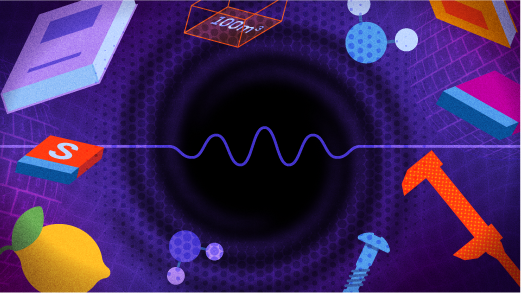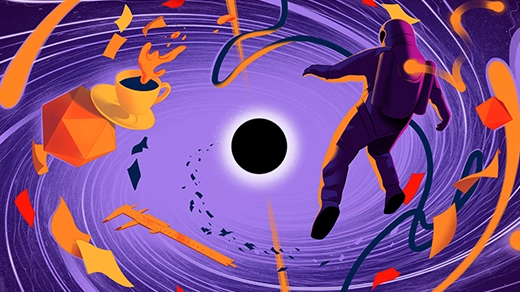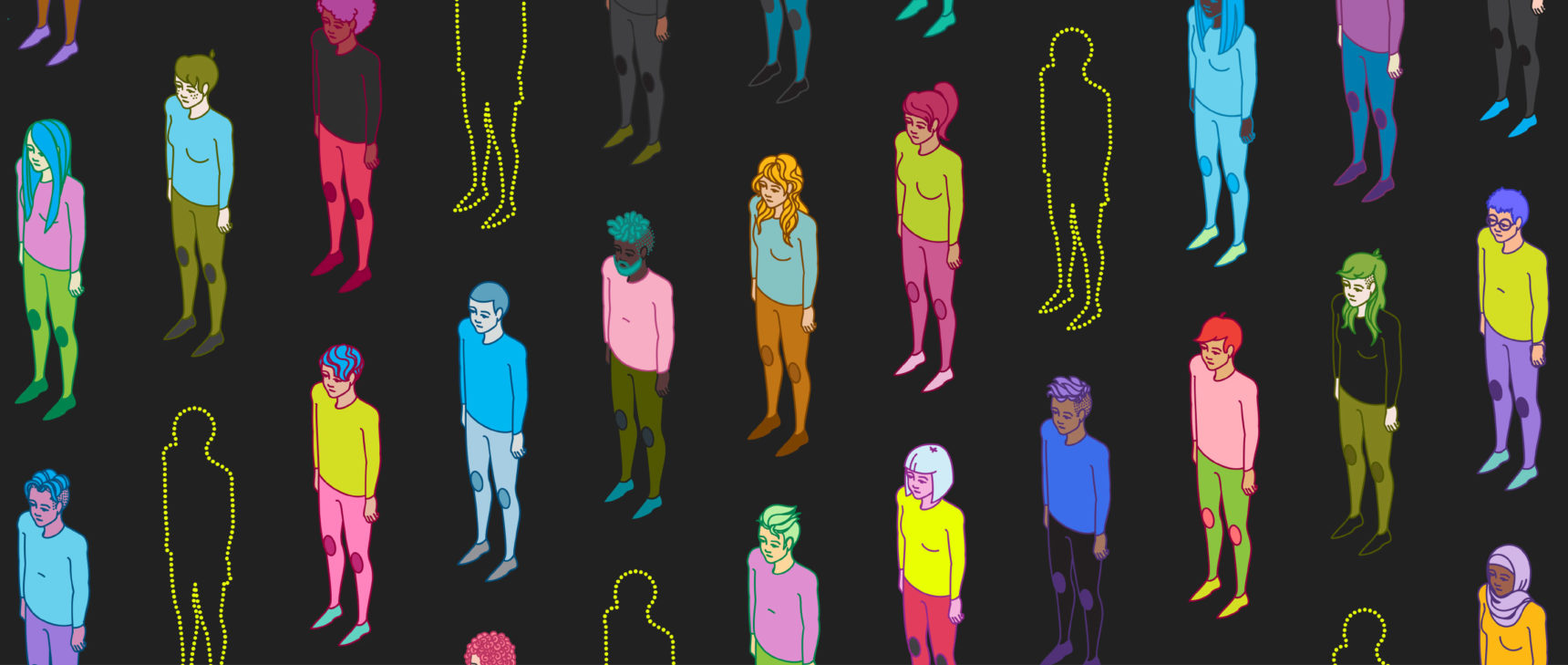
Eva Silverstein, pictured at Stanford University, developed a Big Bang theory that incorporates a spiral-staircase-like structure.
Ryan Schude (opens a new tab) for Quanta Magazine
Introduction
“My ideal day,” wrote Eva Silverstein (opens a new tab), a leading string cosmologist and a professor at Stanford University and the Stanford Linear Accelerator Center (SLAC), in an email to Quanta Magazine, “starts with a couple hours of uninterrupted thinking at home, then some midmorning exercise (a brief hill ride on my bike). After that I head to the office to continue working and to discuss with collaborators and colleagues.”
Silverstein’s style is to block off long periods of quiet, while also taking advantage of being part of “a large and exciting group, with lots of serendipitous interactions,” she wrote. “I tend to exploit the freedom one has as a theorist to explore widely, addressing a variety of problems in quantum field theory, gravity and cosmology over the years.”
One of Silverstein’s big ideas is monodromy inflation (opens a new tab), a theory about how and why the Big Bang might have happened. “Monodromy inflation grew out of an attempt to simplify string-theoretic models of dark energy,” Silverstein wrote. According to the idea, cosmic inflation, the putative spark of the Big Bang, was a sudden unwinding of energy, space and time. She said the theory incorporates into the laws of nature “a structure much like a windup toy or spiral staircase that lets the system evolve a long way in a small space, building up potential energy along the way.”
“This is a common behavior in string theory,” she continued, “and a new twist on the classic axion field” pioneered by Roberto Peccei and Helen Quinn, who developed their theory while riding around Stanford in a clunky Jeep in the 1970s.
Along with collaborators and other groups working in parallel, Silverstein developed the monodromy idea and its observational signatures — “notably primordial gravitational waves, a signal of high-energy inflationary cosmology which is the subject of intense observational searches,” she wrote. The BICEP2 experiment reported the discovery of these swirly fingerprints of the Big Bang in 2014, but the signal turned out to be from cosmic dust. The search continues.

Silverstein at Stanford.
Ryan Schude (opens a new tab) for Quanta Magazine
Silverstein often tries to address questions about the Big Bang, dark energy or gravity using string theory — physicists’ best guess for how quantum gravity might work, but an idea strongly criticized as untestable. The theory allows researchers like Silverstein to write down sensible equations about what might happen inside black holes or during the Big Bang. But string theory describes invisibly tiny details of reality — vibrating strings at the hearts of point particles that are probably too small to detect directly, and that could come in a vast array of unique manifestations.
Silverstein, 46, has emerged as one of string theory’s most sure-footed defenders. She argued against the theory’s irrelevance in a paper posted online (opens a new tab) in June that will appear in the book Why Trust a Theory?, a collection of articles that grew out of a 2015 meeting of physicists and philosophers in Munich. In the essay, she describes string theory’s usefulness in early-universe cosmology and its ability to increase “our empirical knowledge of the universe via the standard scientific method, regardless of whether the analysis results in a discovery or a null result.”



